Monacor ATS-12HT Handleiding
Monacor
Niet gecategoriseerd
ATS-12HT
Bekijk gratis de handleiding van Monacor ATS-12HT (4 pagina’s), behorend tot de categorie Niet gecategoriseerd. Deze gids werd als nuttig beoordeeld door 11 mensen en kreeg gemiddeld 4.7 sterren uit 6 reviews. Heb je een vraag over Monacor ATS-12HT of wil je andere gebruikers van dit product iets vragen? Stel een vraag
Pagina 1/4

ELECTRONICS FOR SPECIALISTS ELECTRONICS FOR SPECIALISTS ELECTRONICS FOR SPECIALISTS ELECTRONICS FOR SPECIALISTS
Handmikrofon mit Sender
Hand-held Microphone with Transmitter
ATS-12HT
Bestell-Nr. • Order No. 25.3310
BEDIENUNGSANLEITUNG
INSTRUCTION MANUAL
MODE D’EMPLOI
ISTRUZIONI PER L’USO
MANUAL DE INSTRUCCIONES
INSTRUKCJA OBSŁUGI
863 – 865 MHz

2
DeutschEnglish
Handmikrofon mit Sender
Diese Anleitung richtet sich an Benutzer
ohne besondere Fachkenntnisse. Bitte lesen
Sie die Anleitung vor dem Betrieb gründlich
durch und heben Sie sie für ein späteres
Nachlesen auf.
1 Einsatzmöglichkeiten
Dieses Handmikrofon mit Sender bildet in
Verbindung mit einem oder mehreren Emp-
fänger / n ATS-10R oder ATS-16R ein drahtlo-
ses Audioübertragungssystem, z. B. für Grup-
penführungen.
1.1 Konformität und Zulassung
Hiermit erklärt MONACOR INTERNATIO NAL,
dass das Funkmikrofon ATS-12HT der Richt-
linie 2014 / 53 / EU entspricht. Die EU-Konfor-
mitätserklärung ist im Internet verfügbar:
www.monacor.de
Das Funkmikrofon ist für den Betrieb in den
EU- und EFTA-Staaten allgemein zugelassen.
Der Betrieb des Mikrofons ist anmelde- und
gebührenfrei.
2 Wichtige Hinweise
Das Mikrofon entspricht allen relevanten
Richt linien der EU und trägt deshalb das
-Zeichen.
•
Setzen Sie das Mikrofon nur im Innenbe-
reich ein und schützen Sie es vor Feuchtig-
keit und Hitze (zulässiger Einsatztempera-
turbereich .0 – 40 °C)
•
Verwenden Sie zum Reinigen nur ein tro-
ckenes, weiches Tuch, niemals Wasser oder
Chemikalien.
•
Um das Mikrofon vor Beschädigung durch
auslaufende Batterien /Akkus zu schützen,
nehmen Sie diese bei längerem Nichtge-
brauch heraus.
•
Wird das Mikrofon zweckentfremdet,
falsch bedient oder nicht fachgerecht
repariert, kann keine Haftung für daraus
resultierende Sach- oder Personenschäden
und keine Garantie für das Mikrofon über-
nommen werden.
Soll das Mikrofon endgültig aus
dem Betrieb genommen werden,
entsorgen Sie es gemäß den örtli-
chen Vor schriften
Batterien /Akkus dürfen nicht im Hausmüll
entsorgt werden. Geben Sie sie gemäß den
örtlichen Vorschriften in den Sondermüll.
3 Voreinstellungen /
Stromversorgung
Den Riegel (4) des Batteriefachdeckels in
Richtung Mikrofonkorb drücken, so dass der
Deckel ausrastet und abgenommen werden
kann. Die zwei Schalter im Batteriefach mit-
hilfe eines schmalen Gegenstands einstellen:
– Mit dem Schalter RF POWER (2) die Sende-
leistung ≤ 10 mW (HI) oder ≤ 1 mW (LOW)
wählen; bei niedriger Leistung verringert
sich der Stromverbrauch, jedoch auch die
Reichweite.
– Mit dem Schalter TALK (3) die Funktion
der Sprechtaste (1) wählen: bei Position
TALK dient sie als Stummschalttaste, bei
Position PUSH als PTT-Taste (Push To Talk
☞
Kapitel4, Punkt 3).
Zwei Batterien oder Akkus (Typ ☞ Kapi-
tel 5), wie im Fach aufgedruckt, einsetzen.
Das Fach schließen.
4 Bedienung
1) Zum Ein- und Ausschalten die Taste (5)
länger gedrückt halten. Das Display (6)
zeigt im Betrieb den eingestellten Kanal
und den Batterieladezustand. Dieser wird
auch über die Beleuchtung der Taste
angezeigt (blau = ausreichend, rot =
niedrig).
Die Displaybeleuchtung erlischt 10 s
nach dem Einschalten. Bei Drücken oder
Kippen des Kanalwahlrads (7) wird sie für
10 s eingeschaltet.
2) Um einen anderen Kanal einzustellen, das
Kanalwahlrad (7) so lange hineindrücken,
bis die Kanalanzeige blinkt. Solange sie
blinkt (10 s lang nach Betätigung des
Rads), ist die Einstellung möglich: Mit
jedem Kippen des Rads nach oben wird
ein Kanal höher gesprungen, mit jedem
Kippen nach unten ein Kanal zurück. Zum
schnellen Durchlauf kann das Rad auch in
der Kipp-Position gehalten werden. Zum
Bestätigen der Kanalwahl das Rad kurz
drücken.
Hinweis: Am Empfänger ATS-10R /ATS-16R
sind die Kanäle mit 0 bis F bezeichnet:
Kanal0 entspricht Kanal 01, …, Kanal F ent-
spricht Kanal 16.
3) Die Funktion der Sprechtaste (1) hängt
von der Position des Schalters TALK (3) ab:
– Ist TALK gewählt, lässt sich mit der Taste
die Stummschaltung aktivieren (Taste
leuchtet rot) und deaktivieren (Taste
leuchtet grün / Grundeinstellung nach
jedem Einschalten).
– Ist PUSH gewählt, dient die Taste als
PTT-Taste: Der Ton wird übertragen, so-
lange sie gedrückt gehalten wird (Taste
leuchtet grün). Wird sie gelöst, ist die
Funkübertragung beendet (Taste blinkt
rot).
Bei schlechtem Empfang überprüfen, ob
– auf einem anderen Kanal der Empfang
besser ist,
– der Abstand Mikrofon – Empfänger zu
groß ist,
– sich Hindernisse in der Übertragungsstre-
cke befinden, die das Funksignal abschir-
men können.
5 Technische Daten
Mikrofontyp: . Elektret /
Nierencharakteristik
Funkfrequenz-
bereich: . . . . . 863 – 865 MHz (16 Kanäle)
Sendeleistung: ≤ 10 mW (HI) / ≤ 1 mW (LOW)
Strom-
versorgung: . . 2 × Mignon-Batterie 1,5 V
oder 2 × Mignon-NiMH-
Akku 1,2 V
Betriebszeit: . . > 12 h (HI) / > 15 h (LOW)
bei 1600-mAh-Akkus
Abmessungen:
⌀
35 mm × 200 mm
Gewicht: . . . . . 93 g
Änderungen vorbehalten.
Hand-held Microphone
with Transmitter
These instructions are intended for users
without any specific technical knowledge.
Please read these instructions carefully prior
to operation and keep them for later refer-
ence.
1 Applications
In combination with a receiver or several re-
ceivers of the type ATS-10R or ATS-16R, this
hand-held microphone with transmitter pro-
vides a wireless audio transmission system,
e. g. for guided tours.
1.1 Conformity and Approval
Herewith, MONACOR INTERNATIONAL de-
clare that the wireless microphone ATS-12HT
complies with the directive 2014 / 53 / EU. The
EU declaration of conformity is available on
the Internet:
www.monacor.com
The wireless microphon is generally ap-
proved for operation in EU and EFTA coun-
tries. The operation of the microphone is
licence-free and requires no registration.
2 Important Notes
The microphone corresponds to all relevant
directives of the EU and is therefore marked
with .
•
The microphone is suitable for indoor use
only. Protect it against humidity and heat
(admissible ambient temperature range
0 – 40 °C).
•
For cleaning only use a dry, soft cloth;
never use chemicals or water.
•
To prevent damage to the microphone due
to battery leakage, always remove the bat-
teries when the microphone is not in use
for a longer period of time.
•
No guarantee claims for the microphone
and no liability for any resulting personal
damage or material damage will be ac-
cepted if the microphone is used for other
purposes than originally intended, if it is
not correctly operated, or not repaired in
an expert way.
If the is to be put out microphone
of operation definitively, dispose
of the in accordance microphone
with local regulations.
Never put batteries in the household waste.
Always dispose of the batteries in accord-
ance with local regulations.
3 Presets / Power Supply
Push the latch (4) of the battery compart-
ment cover towards the microphone head
to unlock the cover, then remove the cover.
Set the two switches in the battery compart-
ment by means of a narrow object:
– With the switch RF POWER (2), select
the transmitting power ≤ 10 mW (HI) or
≤ 1 mW (LOW); at a low power, the power
consumption will decrease; however, the
transmission range will also decrease.
– With the switch TALK (3), select the func-
tion of the talk button (1): in the position
TALK it is used as a mute button; in the
position PUSH it is used as a PT T button
(Push-to-Talk ☞ chapter4, step 3).
Insert two (rechargeable) batteries (type
☞ chapter 5) according to the marking
inside the compartment. Close the compart-
ment.
4 Operation
1) To switch on / off the microphone, keep the
button (5) pressed for a while. When in
operation, the display (6) shows the chan-
nel currently set and the battery status.
The battery status is also indicated via
the illumination of the button (blue =
sufficient, red = low).
The display illumination is extin-
guished 10 s after switching on. When
you press or tilt the channel selection
wheel(7), it is switched on for 10 s.
2) To set another channel, press the chan-
nel selection wheel (7) until the channel
indication starts flashing. As long as it
keeps flashing (for 10 s after using the
wheel), it is possible to set the channel:
Each time you tilt the wheel upwards, the
next higher channel is set; each time you
tilt it downwards, the next lower channel
is set. For scanning through the channels,
tilt the wheel and keep it in this position.
To confirm the channel selection, briefly
press the wheel.
Note: On the receiver ATS-10R /ATS-16R, the
channels are marked 0 to F: channel 0 corre-
sponds to channel 01, …, channel F corre-
sponds to channel 16.
3) The function of the talk button (1) de-
pends on the position of the switch
TALK(3):
– Position TALK to mute the sound (but-
ton lighting in red) or to talk (button
lighting in green / basic setting after
switching on).
– Position PUSH: The button is used as
a PT T button: Sound is transmitted
as long as it is kept pressed (button
lighting in green); when it is released,
the wireless transmission ends (button
flashing in red).
If the reception is poor, please check
– if the reception is better on a different
channel.
– if the distance between the microphone
and the receiver is too long.
– if the reception is disturbed by objects in
the transmission path which may shield
the radio signal.
5 Specifications
Type of
microphone: . . electret /cardioid
Radio frequency
range: . . . . . . . 863 – 865 MHz (16 channels)
Transmitting
power: . . . . . . ≤ 10 mW (HI) / ≤ 1 mW (LOW)
Power supply: 2 × 1.5 V battery of size AA .
or 2 × 1.2 V rechargeable
NiMH battery of size AA
Operating
time: . . . . . . . . > 12 h (HI) / > 15 h (LOW) for
rech. batteries of 1600 mAh
Dimensions: . .
⌀
35 mm × 200 mm
Weight: . . . . . 93 g
Subject to technical modification.
ATS-12HT
1 4
2 3 5 6 7

3
ItalianoFrançais
Microphone main avec émetteur
Cette notice s’adresse aux utilisateurs sans
connaissances techniques spécifiques. Veuil-
lez lire la notice avec attention avant le fonc-
tionnement et conservez-la pour pouvoir
vous y reporter ultérieurement.
1 Possibilités d’utilisation
Ce microphone main avec émetteur, consti-
tue, avec un ou plusieurs récepteurs ATS-10R
ou ATS-16R, un système de transmission
audio sans fil, par exemple pour des visites
guidées.
1.1 Conformité et autorisation
Par la présente, MONACOR INTERNATIONAL
déclare que le microphone sans fil ATS-12HT
se trouve en conformité avec la directive
2014 / 53 / UE. La déclaration de conformité
UE est disponible sur Internet :
www.monacor.com
Le microphone sans fil est autorisé pour un
fonctionnement dans les pays de l’Union
européenne et de l’A.E.L.E. sans déclaration
ni taxe.
2 Conseils importants
Le microphone répond à toutes les directives
nécessaires de l’Union européenne et porte
donc le symbole .
•
Le microphone n’est conçu que pour une
utilisation en intérieur. Protégez-le de
l’humidité et de la chaleur (plage de tem-
pérature de fonctionnement autorisée :
0 – 40 °C).
•
Pour le nettoyer, utilisez uniquement un
chiffon sec et doux, en aucun cas, de pro-
duits chimiques ou d’eau.
•
Afin de protéger le microphone de tout
dommage causé par les batteries /accu-
mulateurs, qui pourraient couler, veillez à
retirer les batteries /accumulateurs, en cas
de non utilisation prolongée.
•
Nous déclinons toute responsabilité en
cas de dommages matériels ou corporels
consécutifs si le microphone est utilisé
dans un but autre que celui pour lequel
il a été conçu, s’il n’est pas correctement
utilisé ou s’il n’est pas réparé par une
personne habilitée; de même, la garantie
deviendrait caduque.
Lorsque le microphone est défini-
tivement retiré du service, élimi-
nez-le conformément aux direc-
tives locales.
Ne jetez pas les batteries /accus dans la
poubelle domestique. Déposez-les dans
un container spécifique pour les éliminer
conformément aux directives locales.
3 Préréglages /Alimentation
Poussez la languette (4) du couvercle du
compartiment batterie vers la tête du mi-
crophone pour déverrouiller le couvercle,
retirez ensuite le couvercle. Réglez les deux
interrupteurs situés dans le compartiment
batterie à l’aide d’un objet fin :
– Avec l’interrupteur RF POWER (2), sélec-
tionnez la puissance d’émission ≤ 10 mW
(HI) ou ≤ 1 mW (LOW) ; si la puissance est
faible, la consommation diminue, mais la
portée diminue également.
– Avec l’interrupteur TALK (3), sélectionnez
la fonction de la touche parole (1) : en
position TALK, elle sert de touche pour
couper le son, en position PUSH, elle sert
de touche PT T (Push To Talk: appuyer pour
parler, ☞chapitre 4, point 3).
Insérez deux batteries ou accumulateurs
(type ☞chapitre 5) comme indiqué dans le
compartiment. Fermez le compartiment.
4 Utilisation
1) Pour allumer et éteindre le microphone,
maintenez la touche (5) enfoncée un
certain temps. Pendant le fonctionne-
ment, l’affichage (6) indique le canal réglé
et l’état de charge des batteries. Ce der-
nier est également indiqué par l’éclairage
de la touche (bleu= suffisant, rouge =
faible).
L’éclairage de l’affichage s’éteint
10secondes après la mise sous tension du
microphone. Si vous appuyez ou inclinez la
molette de sélection de canal(7), l’éclai-
rage est allumé pendant 10secondes.
2) Pour régler un autre canal, appuyez sur la
molette de sélection de canal (7) jusqu’à
ce que l’affichage de canal clignote. Tant
qu’il clignote (10 secondes après la der-
nière activation de la molette), le réglage
est possible : à chaque inclinaison de la
molette vers le haut, vous augmentez
d’un canal, à chaque inclinaison vers le
bas, vous reculez d’un canal. Pour un dé-
filement rapide, vous pouvez également
maintenir la molette dans la position incli-
née. Pour confirmez la sélection de canal,
appuyez brièvement sur la molette.
Conseil : Sur le récepteur ATS-10R /ATS-16R,
les canaux sont désignés par 0 à F : Canal 0
correspond au canal 01, …, canal F correspond
au canal16.
3) La fonction de la touche parole (1) dépend
de la position de l’interrupteur TALK (3):
– Si TALK est sélectionné, on peut activer
avec la touche, la fonction de coupure
du son (la touche brille en rouge) et la
désactiver (la touche brille en vert / ré-
glage de base après chaque allumage).
– Si PUSH est sélectionné, la touche sert
de touche PT T : le son est transmis
tant qu’elle est maintenue enfoncée (la
touche brille en vert). Si elle est relâ-
chée, la transmission sans fil est termi-
née (la touche clignote en rouge).
En cas de mauvaise réception, vérifiez si :
– la réception est meilleure sur un autre
canal.
– la distance microphone – récepteur est
trop importante.
– des objets se trouvant dans la voie de trans-
mission peuvent perturber la réception.
5 Caractéristiques techniques
Type
microphone : électret /cardioïde
Plage de fréquences
radio : . . . . . . 863 – 865 MHz (16 canaux)
Puissance
émission : . . . ≤ 10 mW (HI) / ≤ 1 mW (LOW)
Alimentation
: 2 × batterie 1,5 V type R6 ou
2 × accumulateur NiMH 1,2 V
type R6
Durée fonc. : . > 12 h (HI) / > 15 h (LOW) pour
accumulateurs 1600 mAh
Dimensions :
⌀
35 mm × 200 mm
Poids : . . . . . 93 g
Tout droit de modification réservé.
Microfono a mano
con trasmettitore
Queste istruzioni sono rivolte all‘uten te
senza conoscenze tecniche specifiche. Vi
preghiamo di leggerle attentamente prima
della messa in funzione e di conservarle per
un uso futuro.
1 Possibilità d’impiego
Questo microfono a mano con trasmettitore
costituisce, in collegamento con uno o più
ricevitori ATS-10R o ATS-16R, un sistema wi-
reless di trasmissione audio, p. es. per guide
a gruppi di persone.
1.1 Conformità e omologazione
Con la presenta, la MONACOR INTERNATIO-
NAL dichiara che il radiomicrofono ATS-12HT
è conforme alla direttiva 2014 / 53 / UE. La di-
chiarazione di conformità UE é disponibile in
Internet (www.monacor.com).
Il radiomicrofono è omologato per l‘im-
piego negli stati dell‘UE e dell‘EFTA. L’im-
piego del microfono non richiede né regi-
strazione né pagamento di tasse.
2 Avvertenze importanti
Il microfono è conforme a tutte le direttive
rilevanti dell’UE e pertanto porta la sigla .
•
Usare il microfono solo all’interno di locali
e proteggerlo dall’umidità e dal calore
(temperatura d’impiego ammessa fra 0 e
40 °C).
•
Per la pulizia usare solo un panno mor-
bido, asciutto; non impiegare in nessun
caso acqua o prodotti chimici.
•
Per proteggere il microfono da batterie
che perdono, conviene toglierle in caso di
non uso prolungato del microfono.
•
Nel caso d’uso improprio, d’impiego scor-
retto o di riparazione non a regola d’arte
del microfono, non si assume nessuna
responsabilità per eventuali danni con-
sequenziali a persone o a cose e non si
assume nessuna garanzia per il microfono.
Se si desidera eliminare il micro-
fono definitivamente, consegnarlo
per lo smaltimento ad un’istitu-
zione locale per il riciclaggio.
Non gettare le batterie, ricaricabili o non,
nelle immondizie di casa bensì negli appo-
siti contenitori (p. es. presso il vostro riven-
ditore).
3 Preimpostazioni /Alimentazione
Spostare la leva (4) del coperchio del vano
batterie in direzione del cestello del micro-
fono in modo che il coperchio si sblocchi e
possa essere staccato. Regolare i due switch
nel vano batterie con l’aiuto di un oggetto
stretto:
– Con lo switch RF POWER (2) si sceglie
la potenza di trasmissione ≤ 10 mW (HI)
oppure ≤ 1 mW (LOW); con potenza più
bassa, si riduce il consumo di corrente, ma
anche la portata.
– Con lo switch TALK (3) si sceglie la fun-
zione del tasto voce (1): nella posizione
TALK serve come tasto per la funzione di
muto, nella posizione PUSH come tasto
PT T (push to talk ☞ Cap. 4, punto3).
Inserire due batterie, ricaricabili o no (tipo
☞ Cap. 5), come indicato nel vano batterie,
e chiudere il vano.
4 Funzionamento
1) Per accendere e spegnere tener permuto
per un po’ il tasto (5). Il display (6) vi-
sualizza durante il funzionamento il ca-
nale impostato e lo stato delle batterie
che è segnalato tramite l’illuminazione
del tasto (blu = sufficiente, rosso =
basso).
L’illuminazione del display si spegne
passati 10 secondi dall’accensione. Pre-
mendo o inclinando la ruota di scelta ca-
nale (7) si attiva per 10 secondi.
2) Per impostare un altro canale, premere in-
dentro la ruota di scelta canale (7) finché
l’indicazione del canale inizia a lampeg-
giare. Mentre lampeggia (per 10 s dopo
l’azionamento della ruota), è possibile
l’impostazione: inclinando la ruota verso
l’alto, si salta ogni volta a un canale su-
periore, inclinandola in senso opposto si
ritorna di un canale. Per scorrere i canali
velocemente, è possibile tenere la ruota
in posizione inclinata. Per confermare la
scelta del canale premere brevemente la
ruota.
Nota: Sul ricevitore ATS-10R /ATS-16R, i ca-
nali sono contrassegnati da 0 a F: il canale0
corrisponde al canale 01, …, il canale F al
canale 16.
3) La funzione del tasto voce (1) dipende
dalla posizione dello switch TALK (3):
– Se è scelto TALK, con il tasto voce, la
funzione di muto può essere attivata (il
tasto si accende di rosso) e disattivata
(il tasto si accende di verde / imposta-
zione base dopo ogni accensione).
– Se è scelto PUSH, il tasto serve come
tasto PT T: l’audio è trasmesso finché
si tiene premuto il tasto (il tasto si ac-
cende di verde). Se si lascia il tasto, ter-
mina la trasmissione vie radio (il tasto
lampeggia di rosso).
In caso di ricezione debole, controllare se
– con un altro canale, la ricezione migliora,
– la distanza fra microfono e ricevitore è
troppo grande,
– ci sono ostacoli fra microfono e ricevitore
che possono schermare il segnale radio.
5 Dati tecnici
Tipo di
microfono: . . . elettrete / a cardioide
Gamma di radio-
frequenze: . . . 863 – 865 MHz (16 canali)
Potenza di
trasmissione: . ≤ 10 mW (HI) / ≤ 1 mW (LOW)
Alimentazione: 2 × batterie stilo 1,5 V o
2 × batterie ricaricabili stilo
al NiMH 1,2 V
Durata : . . . . . > 12 h (HI) / > 15 h (LOW) con
batt. ricaricabili 1600 mAh
Dimensioni: . .
⌀
35 mm × 200 mm
Peso: . . . . . . . 93 g
Con riserva di modifiche tecniche.
ATS-12HT
1 4
2 3 5 6 7
CARTONS ET EMBALLAGE
PAPIER À TRIER
Product specificaties
| Merk: | Monacor |
| Categorie: | Niet gecategoriseerd |
| Model: | ATS-12HT |
Heb je hulp nodig?
Als je hulp nodig hebt met Monacor ATS-12HT stel dan hieronder een vraag en andere gebruikers zullen je antwoorden
Handleiding Niet gecategoriseerd Monacor

17 Augustus 2024

28 Augustus 2023

1 Juli 2023

30 Juni 2023

30 Juni 2023

29 Juni 2023

28 Juni 2023

27 Juni 2023

24 Juni 2023

21 Juni 2023
Handleiding Niet gecategoriseerd
- Steinel
- VirtuFit
- Babybjörn
- Lindell Audio
- Olympus
- Tognana
- Rommer
- Veise
- IBox
- Maxview
- TVS
- FED
- Acard
- MJX
- Bluestork
Nieuwste handleidingen voor Niet gecategoriseerd

31 Juli 2025

31 Juli 2025
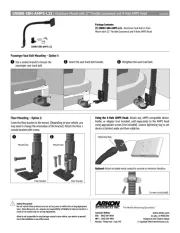
31 Juli 2025
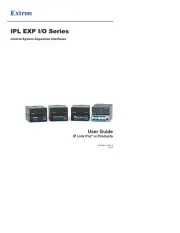
31 Juli 2025

31 Juli 2025
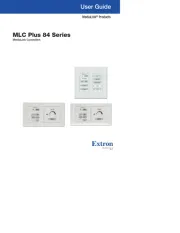
31 Juli 2025

30 Juli 2025
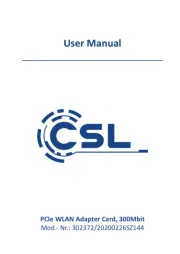
30 Juli 2025
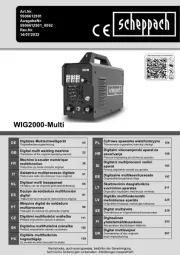
30 Juli 2025
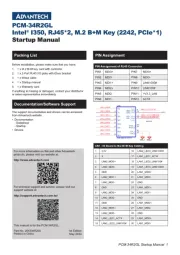
30 Juli 2025